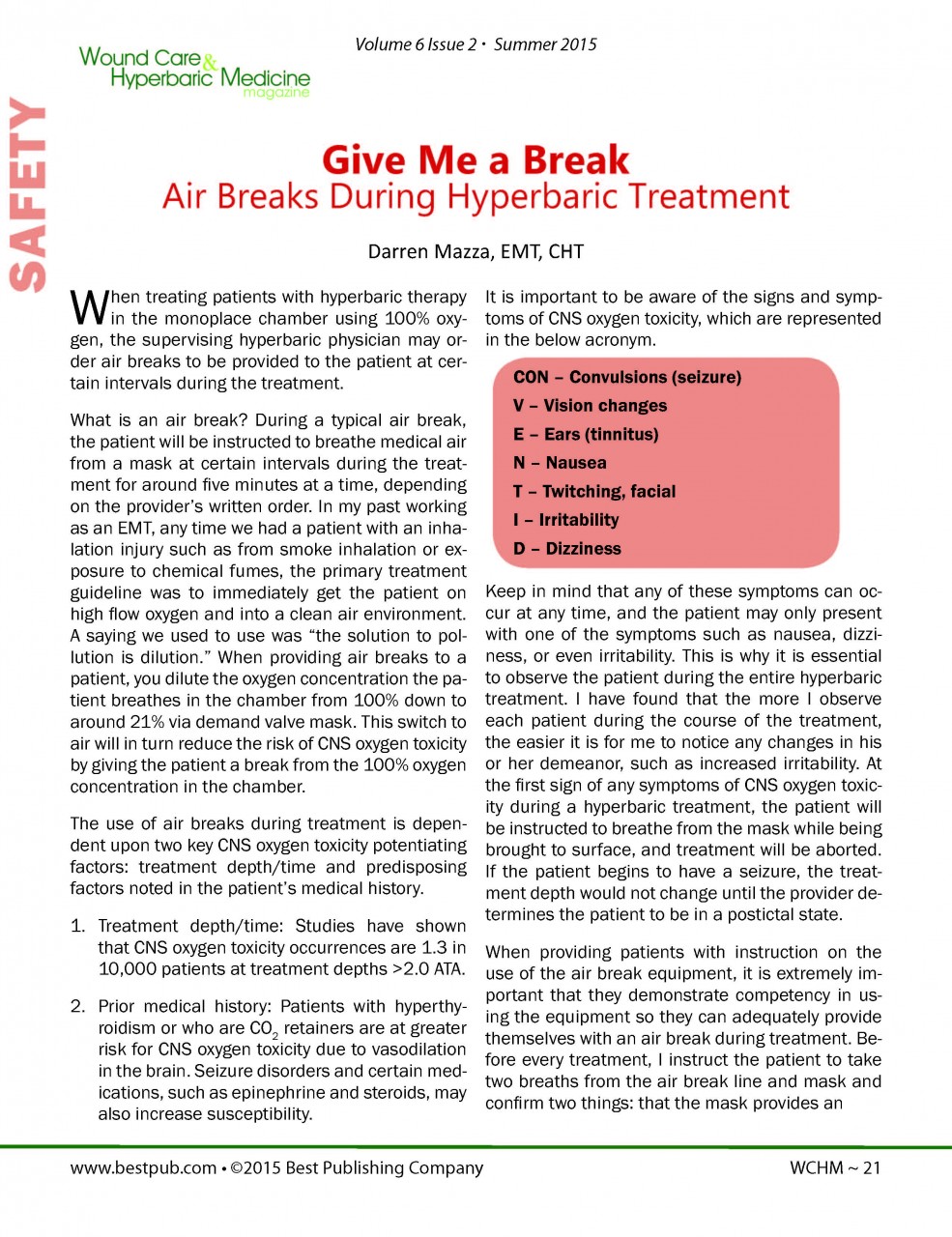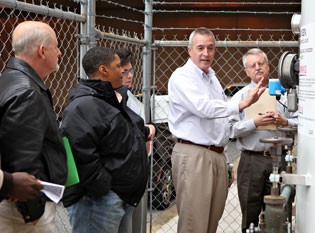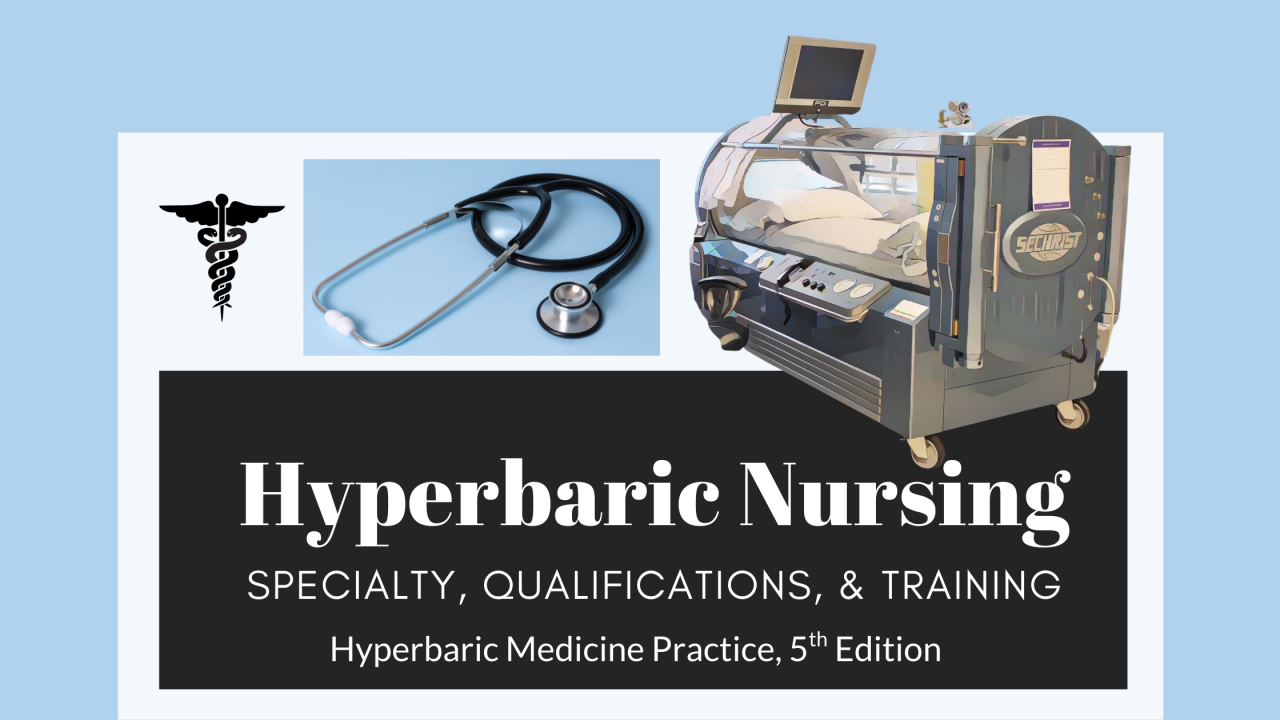
Choosing Hyperbaric Nursing as a speciality.
The specialty of hyperbaric nursing was formally recognized with the founding and incorporation of the Baromedical Nurses Association (BNA) in 1985. The BNA was established with 35 founding RN members at the joint meeting of the UMS Annual Scientific Meeting and the Long Beach Clinical Hyperbaric Conference. The BNA, which is international in scope, maintains a membership of 250 registered nurses from approximately five countries. Functions of the BNA include promoting professional activities that enhance the effectiveness of hyper-baric nursing in the health-care system and promoting educational opportunities and networking for nurses practicing in the specialty. Educational activities of the BNA can now be accessed online and focus on chamber and patient safety, patient compliance, evidence-based best practices, and quality improvement programs.The BNA develops and maintains standards-of-care guidelines in hyperbaric nurs-ing and supports nursing research efforts.(1,2)









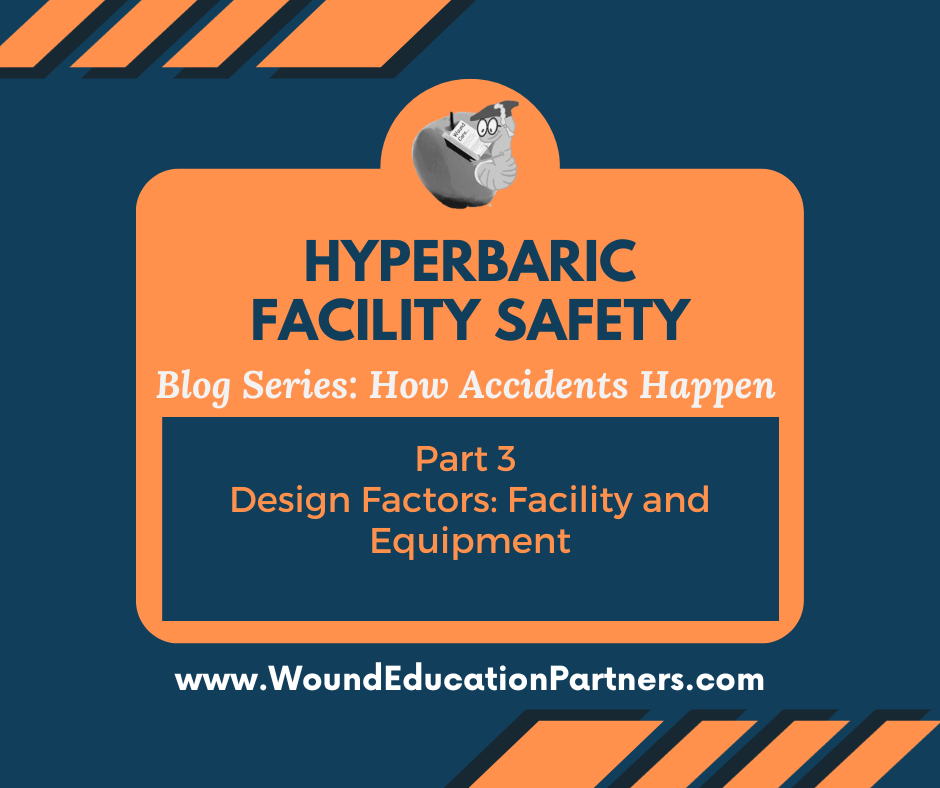
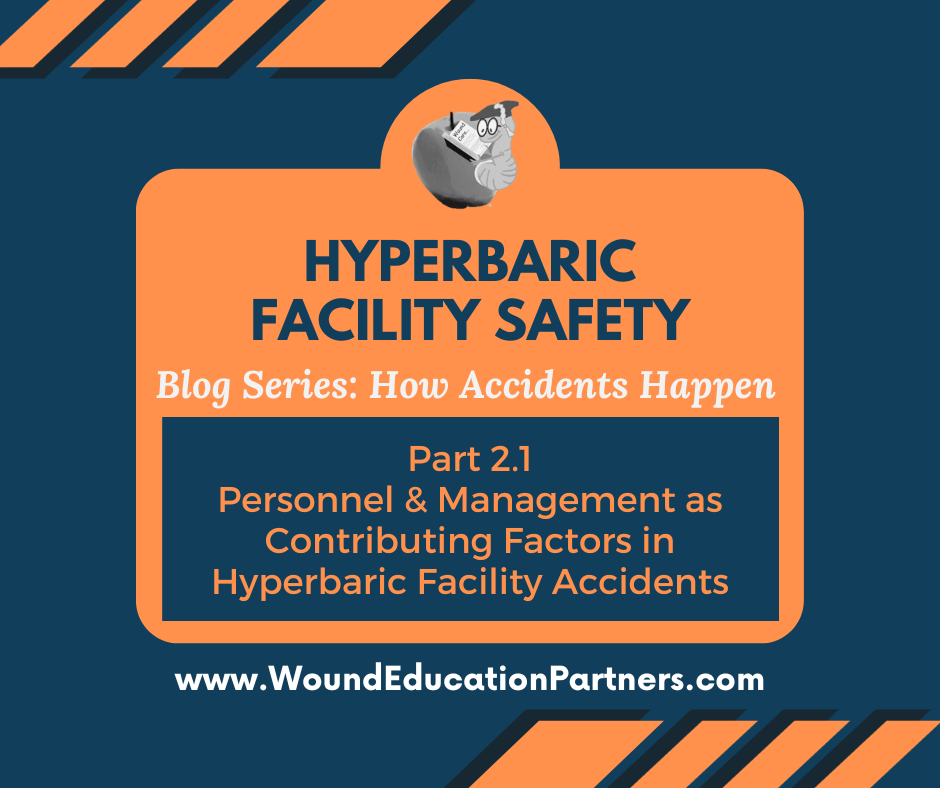


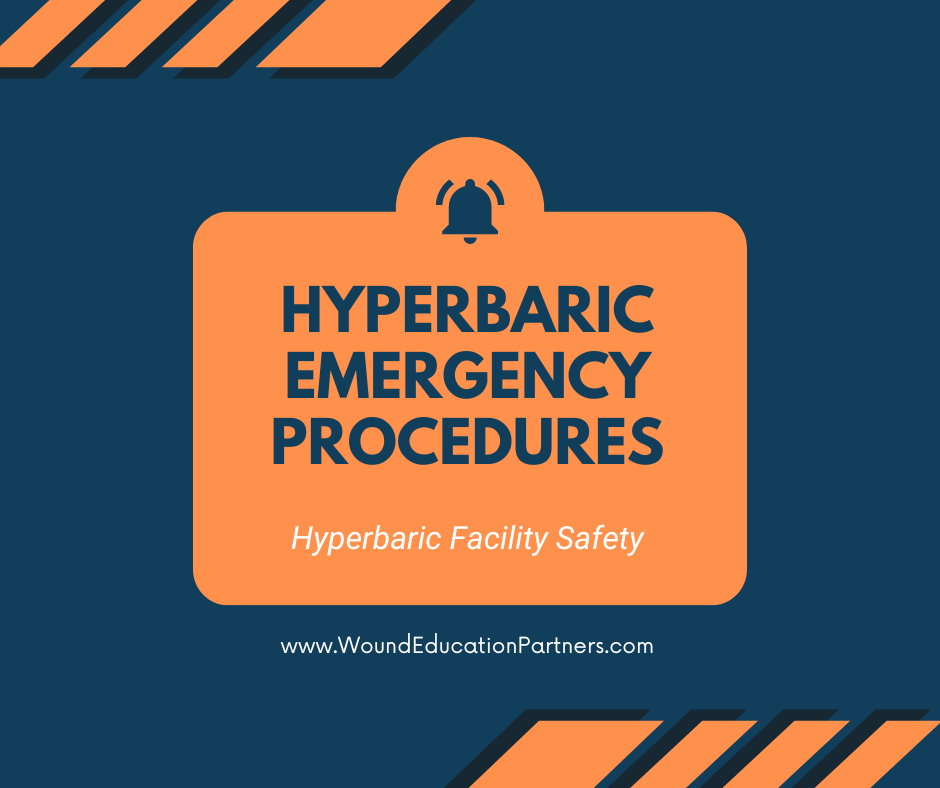



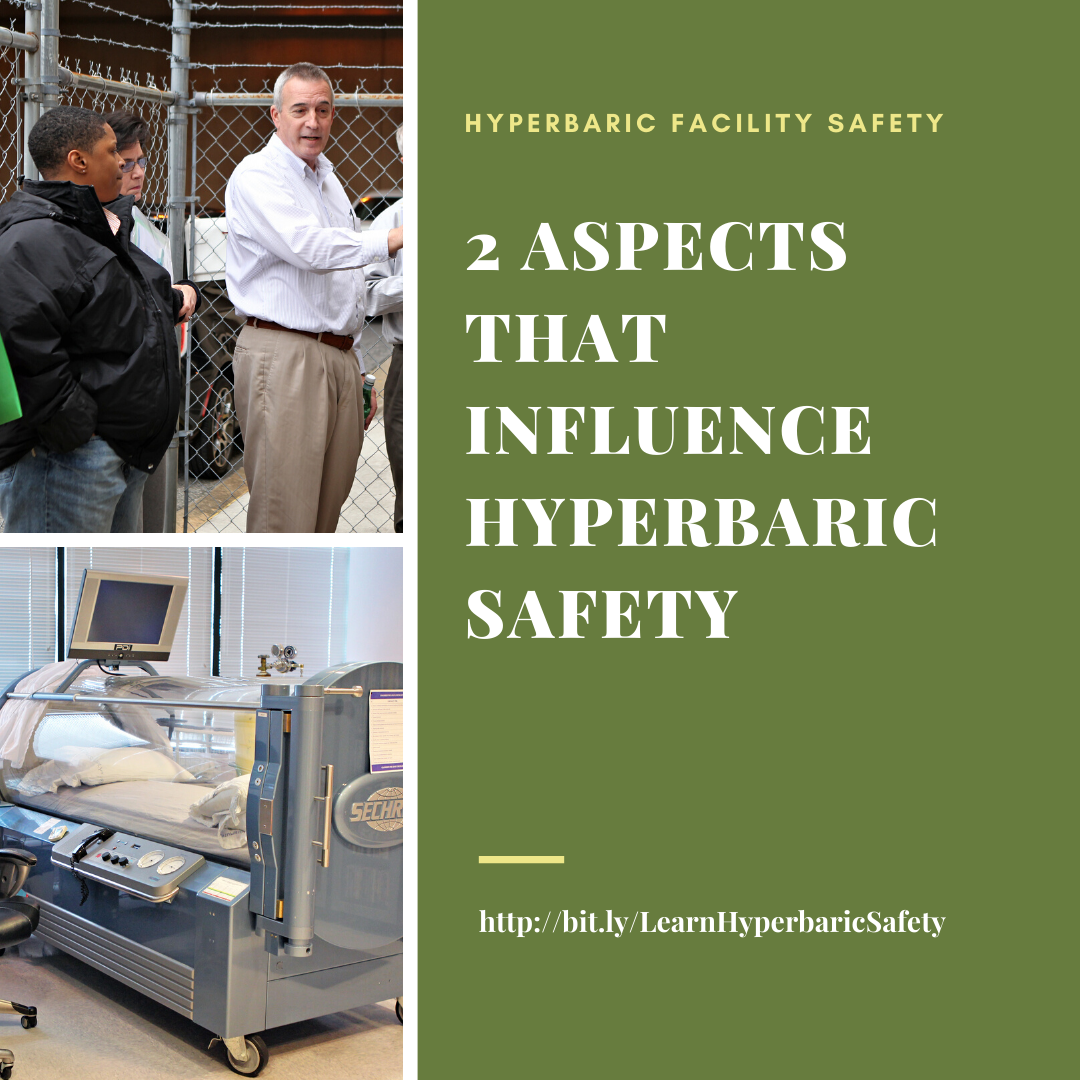
![[Free Webinar] Introduction to the Role of Hyperbaric Safety Director](https://mail.woundeducationpartners.com/images/easyblog_images/176/b2ap3_large_Hyperbaric-Safety-Director-Course_w_20160223-163441_1.jpg)
